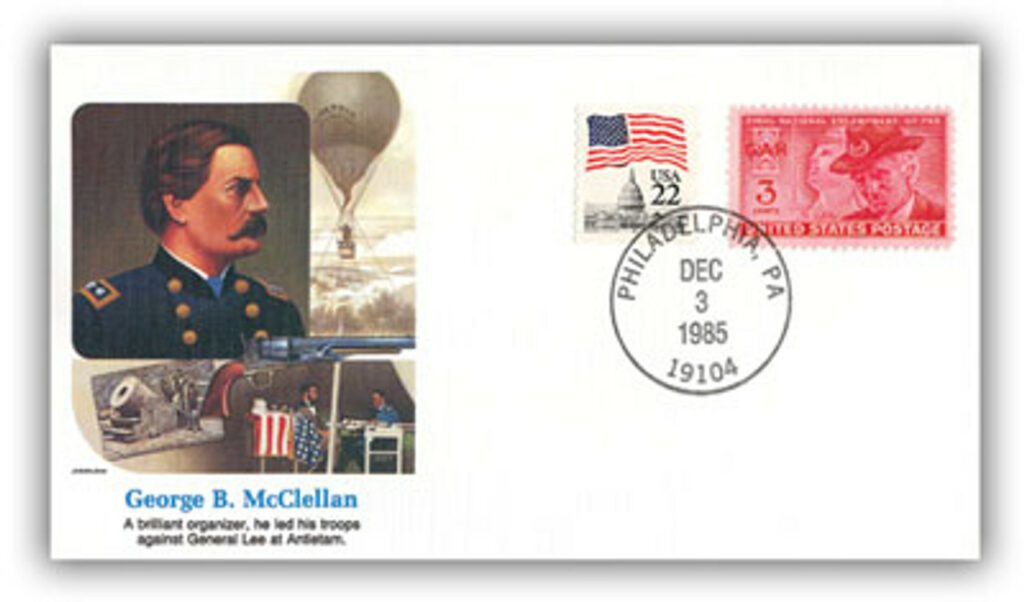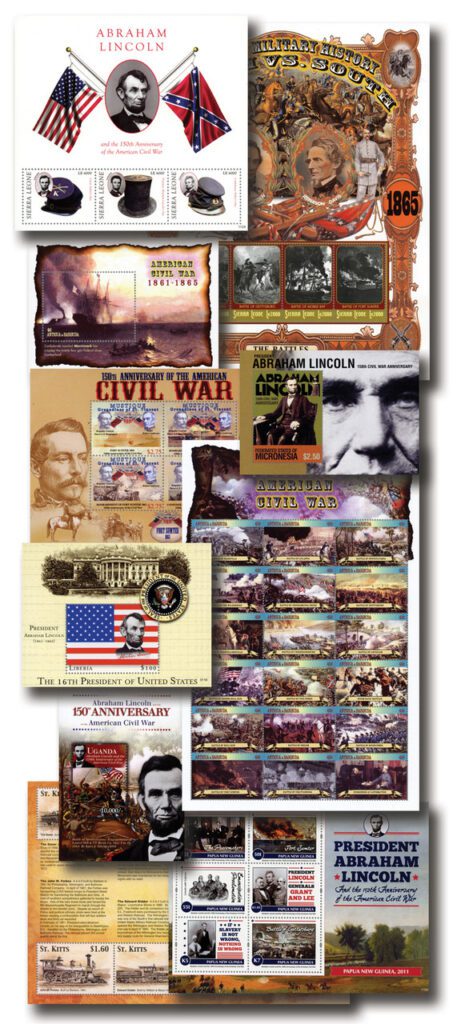On May 31, 1862, the Civil War Battle of Fair Oaks began.
The Union Army was close enough to the Confederate capital to hear Richmond’s church bells ring on Sunday morning. If Major General George B. McClellan could lead his Army of the Potomac just six more miles, they could take the capital and the Civil War would be over. The Battle of Fair Oaks, known in the South as the Battle of Seven Pines, could have been one of the last battles of the war. Instead, it was a turning point in McClellan’s campaign, and the fighting continued for three more years.
McClellan began leading the Army of the Potomac up the Virginia Peninsula in March 1862. His troops slowly advanced toward the Confederate capital. Always cautious and often relying on faulty information, McClellan planned for a siege against a force he thought was much larger than his. General McClellan was ill with malaria throughout much of the campaign and struggled with the sickness during this battle.
Confederate General Joseph E. Johnston and his troops had repeatedly retreated from McClellan’s forces and were now in a defensive position northeast of the capital. The rain-swelled Chickahominy River was a natural defense for the 60,000 Confederate troops protecting Richmond. General Johnston knew his army could not survive a siege, so he decided to go on the offensive while the Union Army was divided, with two corps south of the river and three corps to the north. Johnston hoped to attack before the larger group could cross, but his plan was not communicated well to those under him. He gave oral instructions to Major General James Longstreet and vague written plans to the other leaders. The result was a lack of clear direction and much confusion during battle.
A thunderstorm during the night of May 30 further raised the water level of the river. Many of the bridges built by the Union engineers were washed away, and the surrounding land became swamps. This was a positive turn of events for Johnston because his enemy’s reinforcements were stranded on the other side. His plan to surround the Union Army seemed destined to succeed. Instead, the attack was not well coordinated and chances at victory slipped away.
One of the pieces of information missing from Johnston’s orders was a specific time to start the attack. The battle began five hours later than the general had planned. The first engagements occurred against Brigadier General Silas Casey’s inexperienced force of 6,000 men. Both sides fought bravely and suffered heavy losses. The Confederates broke through the line and Casey’s men retreated to Seven Pines.
By about 4:30 p.m. Confederate reinforcements arrived. General Johnston received news of the battle for the first time and rushed to join. In the early evening, he was wounded twice and taken from the field. Major General G. W. Smith took command.
Meanwhile, Union reinforcements from the other side of the Chickahominy River arrived. Brigadier General Edwin C. Sumner led his men across the unstable “Grapevine Bridge” to the south shore. Before crossing, an engineer desperately tried to convince him the river could not be crossed. Sumner replied, “Impossible? Sir, I tell you I can cross! I am ordered!” The weight of the crossing soldiers held the bridge in place, until after the last man was safely across when it was swept away in the current. The reinforcements helped slow the Confederate advance, then the fighting stopped for the night.
The Confederate Army resumed their attack the next morning. The Union reinforcements in their strong positions proved too powerful for the Southern troops. The Confederate forces withdrew to their defenses, and the battle was over before noon. McClellan did not pursue the retreating army.
The Battle of Fair Oaks was the largest battle of the Eastern Theatre up to that time, and both sides claimed victory. Casualties numbered about the same on both sides and no land was gained by either army. Confederate General G. W. Smith was indecisive in battle and President Davis replaced him with General Robert E. Lee. His offensive against the Union Army forced McClellan and his troops to retreat up the James River. It would take the Union Army nearly two years to get that close to Richmond again, and almost three years to overtake the Confederate capital.
Click here for more Civil War stamps.
Click here to see what else happened on This Day in History.





So the article tells the story of poor leadership on both sides at the time of this battle. Poor health as well as misinformation on the part of General McClellan. If not for this an early and decisive victory may have prevented future carnage on both sides. Thank you for the history lesson Mystic.
Although I am not a Civil War buff, I read a book by a famous American author (Robert Frost?) more than a half century ago that took General McClellan to task for his reticence – and it’s true that President Lincoln became impatient and replaced him with General U. S. Grant.
Very interesting information on this confrontation. I’ve always read of General McClellan’s caution hindering his aggressiveness. But those under his command probably appreciated this caution. What if his intelligence had been right. The Confederates also built fortifications that looked real, with artillery pieces made of wood.
Also interesting was the importance of weather in this battle and in so many throughout history. The defeat of the Spanish Armada, the Russian winter for Napoleon , and the same for the defeated advancing Nazi army into Russian. The retreat of the Mexican army after the Battle of San Jacinto was a disaster because of the heavy rains and flooding in the Brazos and Colorado River basins. There are so many examples. With this knowledge our military places high priority on having excellent weather forecasting.
Good points Steve May — it’s easy to be an armchair quarterback when you have no way to survey the whole field.
What does Antigua and Barbuda have to do with the Battle of Seven Pines in the American Civil War? Why do they care?
Nothing. It’s a way for them to make money. Their stamps, although colorful, pretty, and historic, are virtually worthless. This is one of their main ways of generating revenue. East Germany used to produce many worthless stamps, but they were smart about it. They’d produce a set with a glut of the stamps except for one. If anyone wanted to complete the set, they’d have to purchase the extremely limited (and thus scarce) stamp at a much higher cost. Marshall Islands is another that mass produces colorful, pretty stamps, but not worth a whole lot. These countries produce most of their stamps for collectors, and not for postage, although they do use some of them, the majority is used for collectors.
A great history lesson I was very happy to read because the details explained the weakness of General McClellan and more events about the Battle of Fair Oaks than I knew before reading this article. I appreciate the history lessons Mystic provides behind U. S. stamps issued because the additional information always improves my learning and understanding about events that happened in our great Nation’s. history. Thank you so much, Mystic !!
Thank you Mr. Steve. It just shows how nature can make or break an outcome in man’s attempt to destroy himself. In 1281 the Great Khan of China sent a fleet of ships to conquer Japan. On its way, it was met by a typhoon which decimated the entire force. When word reached the Japanese heads, they referred to the wind in the storm as a: ‘Devine Wind’ or Kamikaze, in Japanese. Thank you Mr. Oellig for your response. I would not buy foreing stamps depicting American, or other events that occurred outside country isssuing the stamps. And as Mr Carpenter mentions, it is done for the sole purpose of generating income for the country of issue. I know of the East German stamps scheme, formally the DDR.